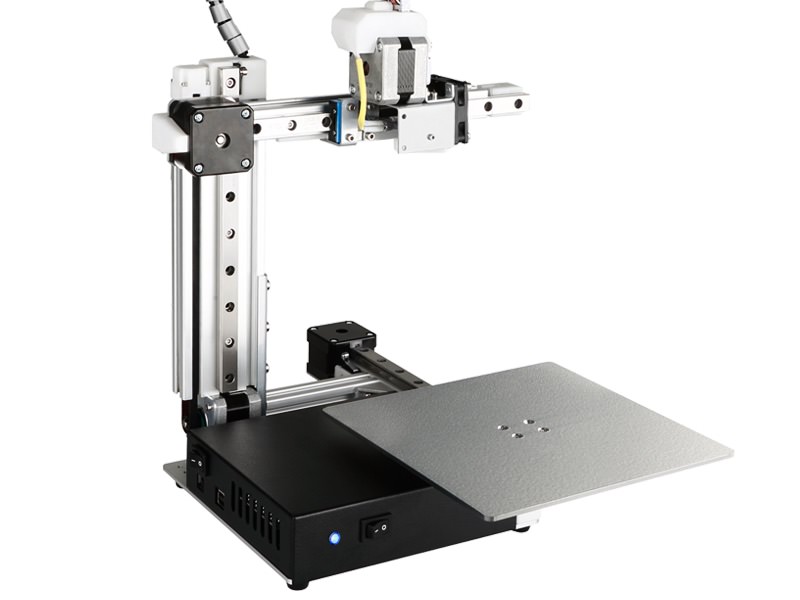

Turning this into a super-simple powered slider for dollying during a time-lapse wouldn’t be too tough - if you’ve already got a nice pantograph slide rig built.Ĭontinue reading “Take A Time-Lapse Or Bake A Cake With This Kitchen Timer Panning Rig” → Posted in digital cameras hacks Tagged GoPro, pan, panning, photography, slider, time-lapseįabDoc is an interesting concept that attempts to tackle a problem many of us didn’t realize we had. Some sample time-lapse shots are in the video below. Set up the shot, wind up the timer, and let it rip at 1/60 of an RPM. The knob, wisely left intact so the amount of time left in the shot is evident, has a matching bolt for the camera’s tripod socket. The timer’s guts were liberated from the case and a simple wooden disc base with a 1/4″-20 threaded insert for a tripod screw was added. Let’s hope ’ time-lapse shots are under an hour, since he based his build on a simple wind-up kitchen timer, the likes of which can be had for a buck or two at just about any store. But they can be a bit bland without a little camera motion, like that provided by a dirt-cheap all-mechanical panning rig. And with good reason – time-lapses are cool. Seems like the first thing the new GoPro owner wants to do is a time-lapse sequence.
#Cetus3d rotation lock axis software#
Posted in Phone Hacks, Software Hacks Tagged app, camera, documentation, ip camera, local network, phone, Still, time-lapse, timelapse, video, web server Heck, even older dumbphones can still get some use out of them Shmoocon 2017 brought us details on rolling your own 1G network.

It could be a good way to get additional use out of an older smartphone, too. Perching a phone over a workspace and using it to create a time-lapse with a couple of shell scripts is a great example of combining simple tools to get better functionality. His capture script ( GitHub repository here) should therefore need only minor changes to work with just about any IP camera app. The app he uses for his iPhone normally serves video but has an undocumented feature that allows single frames to be downloaded by adding ‘/photo’ to the end of the URL, but the ability to get a still image is a common feature on IP camera apps for smartphones. ’s work is just the glue between two other things: an app that turns the phone into an IP camera with a web server on the local network, and the ability to grab a still image from that server on demand. Pretty neat stuff.ĭid you find a 3D printer under your Festivus Pole, and now you’re wondering what’s next? Check out ’s guide for 3D newbies for more tips.Ĭontinue reading “Trio Of Tips For A Cetus Printer” → Posted in 3d Printer hacks Tagged Cetus3D, frame dropping, heated bed, opencv, printer, time-lapseĪ good time-lapse video can be useful visual documentation, and since ’s phone is the best camera he owns he created two simple shell scripts to grab time-lapse images and assemble them into a video. This results in super smooth time-lapse sequences that make it look like the print is being extruded as a unit.

Unhappy with the jerky time-lapse sequences that are standard fare, he wrote a Python program that uses OpenCV to compare webcam frames and save those that are similar to the last saved frame. Nothing revolutionary here - just built a quick cover from aluminum profiles and acrylic.īut the clear case allows for tip number three, the gem of this video: synchronized time-lapse photography. To contain the heat, tip two is an enclosure for the printer. He bolted some power resistors to the aluminum platen, built a simple controller, and used the oversized stock power supply to run everything. While the company offers a heated aluminum bed for ABS and PETG printing at a very reasonable price, rolled his own. One such tinkerer,, has been taking his new Cetus 3D printer to new places, and his latest video offers a trio of tips to enhance the user experience of this bare-bones but capable printer. But most of us quickly learn that adding a dimension increases the level of difficulty substantially, and tinkering ensues. Some noobs are clearly in the “plug and play” camp, looking for a user experience no more complicated than installing a new 2D printer. Thanks to the holiday gifting cycle, many homes are newly adorned with 3D printers.


 0 kommentar(er)
0 kommentar(er)
